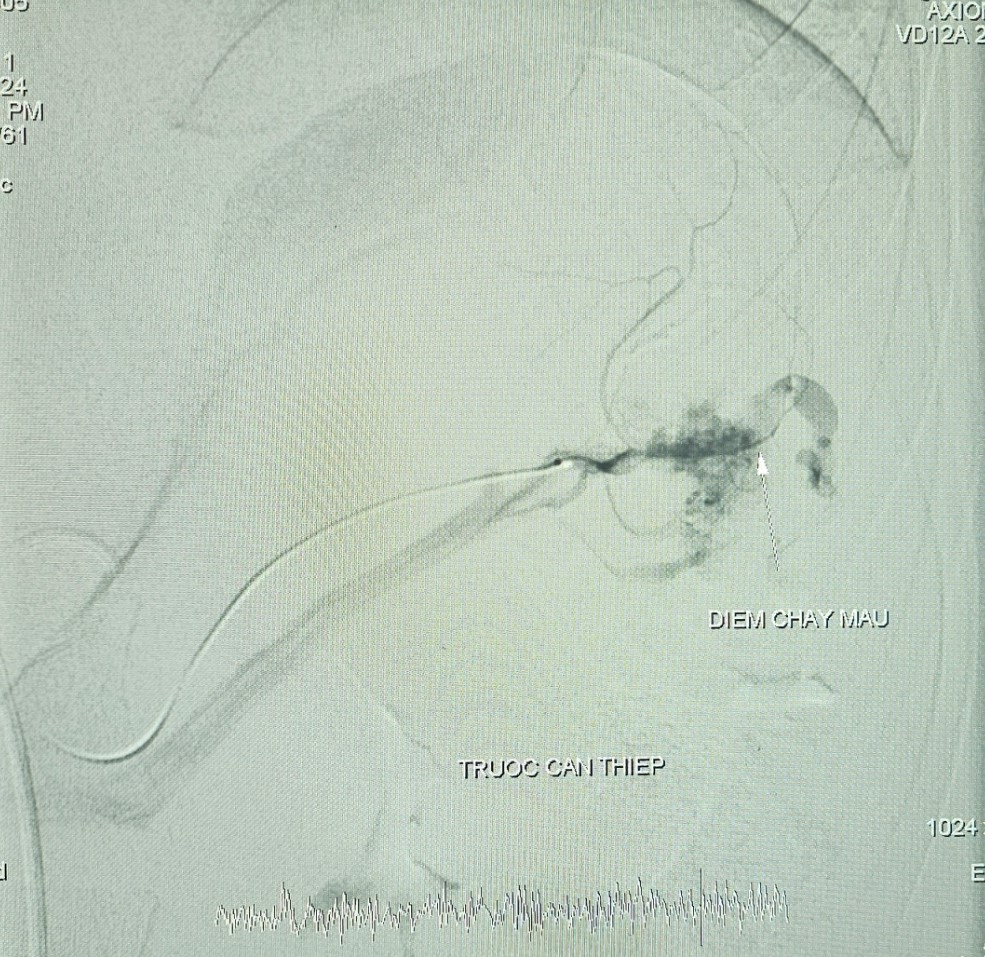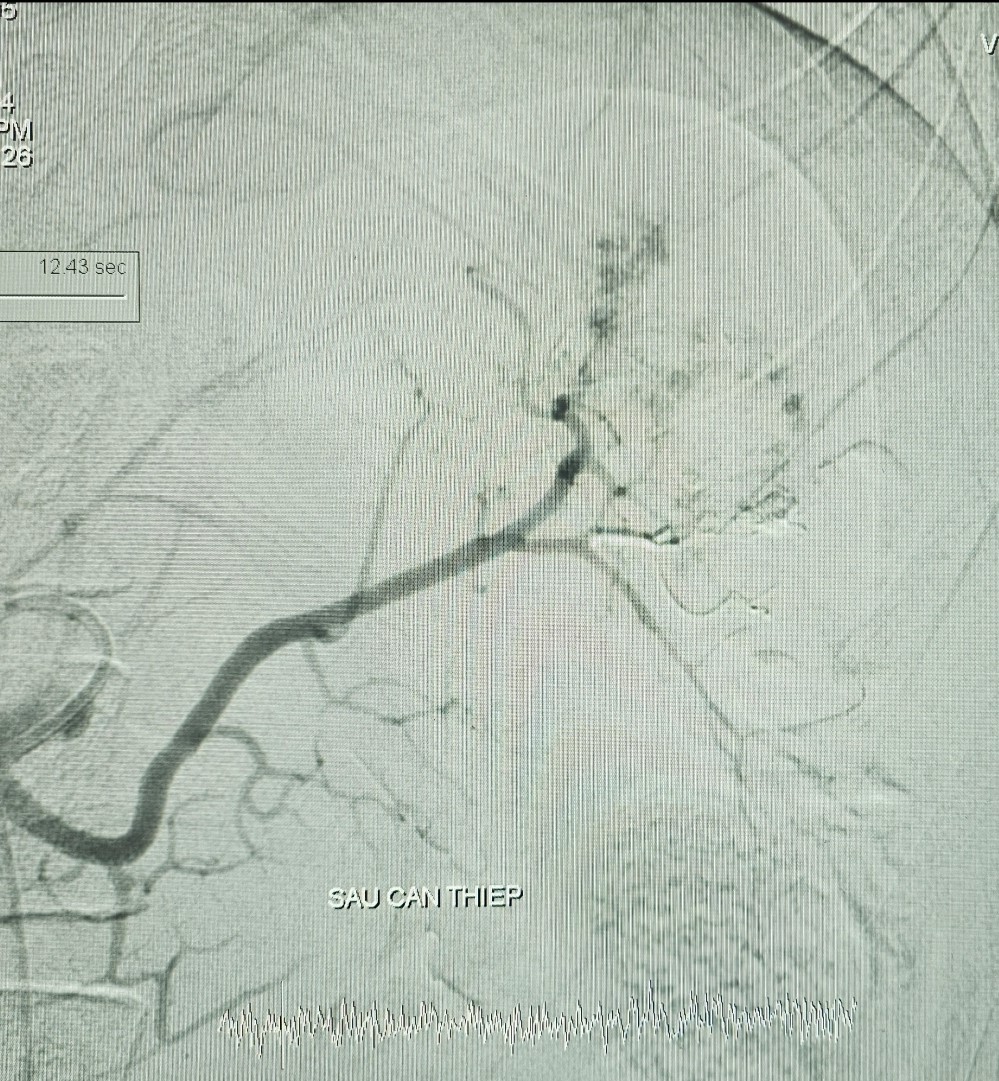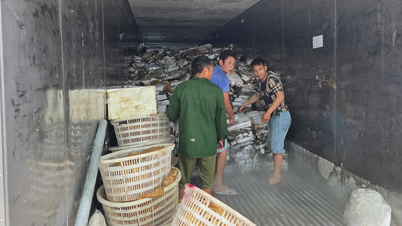Here, doctors performed a CT scan showing that the patient had lung contusions, pericardial effusion, bilateral pleural effusion, grade IV liver injury, grade IV spleen injury with vascular leakage.


Image of ruptured spleen before and after intervention. Photo: BVCC
The patient was consulted at the hospital with many specialties and agreed on the diagnosis: Multiple trauma, grade IV liver injury, grade IV spleen injury, bilateral lung contusion, pericardial effusion, severe blood clotting disorder, the patient's prognosis is very critical.
The optimal treatment for the patient is to perform digital subtraction angiography and embolization of the visceral arteries (DSA). Dr. Tran Cong Khanh - Deputy Head of the Department of Diagnostic Imaging performs this task.
DSA showed liver and spleen injuries, with vascular leakage originating from the right hepatic artery branch and the splenic artery branch, into each branch with lesions.
The team performed the procedure to determine the location and pumped the glue mixture. After the scan, there were no signs of extravasation. The procedure was successful after 25 minutes, the patient's health was stable and he was transferred to the surgical resuscitation unit. When the patient's health allowed, the doctor of the Thoracic and Vascular Surgery Department performed a pleural drainage surgery.
Currently, the patient is able to communicate, vital signs are stable, lungs are clear on both sides, abdomen is soft, skin and mucous membranes are pink and he has been transferred to the General Surgery Department for monitoring.
Dr. Nguyen Khac Nam - Deputy Head of General Surgery Department, Can Tho Central General Hospital said: The liver and spleen are large solid organs in the body, especially the liver contains many blood vessels. If the liver ruptures, it is easy to lose blood quickly, so it is necessary to treat it immediately to avoid leaving it for too long, endangering the patient's life.
Liver and spleen rupture in blunt abdominal trauma is very complicated, requiring correct diagnosis and timely treatment, especially in patients with multiple trauma.
With the hemostatic embolization method (no anesthesia required), it helps to preserve damaged internal organs to the maximum extent, patients do not have to undergo heavy major surgeries lasting for hours, with potential dangerous complications during and after surgery such as hemorrhagic shock, surgical site infection,...
Source: https://giadinh.suckhoedoisong.vn/25-phut-cuu-thanh-nien-19-tuoi-da-chan-thuong-do-tai-nan-giao-thong-172240627121737004.htm



![[Photo] Vietnamese and Hungarian leaders attend the opening of the exhibition by photographer Bozoky Dezso](https://vphoto.vietnam.vn/thumb/1200x675/vietnam/resource/IMAGE/2025/5/28/b478be84f13042aebc74e077c4756e4b)
![[Photo] Prime Minister Pham Minh Chinh receives a bipartisan delegation of US House of Representatives](https://vphoto.vietnam.vn/thumb/1200x675/vietnam/resource/IMAGE/2025/5/28/468e61546b664d3f98dc75f6a3c2c880)

![[Photo] 12th grade students say goodbye at the closing ceremony, preparing to embark on a new journey](https://vphoto.vietnam.vn/thumb/1200x675/vietnam/resource/IMAGE/2025/5/28/42ac3d300d214e7b8db4a03feeed3f6a)
![[Photo] General Secretary To Lam works with the Central Policy and Strategy Committee](https://vphoto.vietnam.vn/thumb/1200x675/vietnam/resource/IMAGE/2025/5/28/7b31a656d8a148d4b7e7ca66463a6894)
















































































Comment (0)